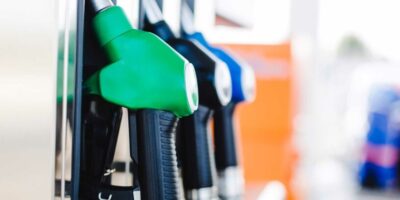 The price of petrol and diesel has increased every day since the end of March on supermarket forecourts, RAC Fuel Watch data reveals.
The price of petrol and diesel has increased every day since the end of March on supermarket forecourts, RAC Fuel Watch data reveals.
A litre of unleaded bought at the big four supermarkets averaged 116.66p and diesel 119.35p on March 26 – eight weeks later on May 23 their pump prices average at 124.74p for petrol and 127.69p for diesel. An 8p a litre increase to the average price at their pumps.
UK average prices have suffered even more over the same period as a result, rising almost 8.5p a litre – although not every day.
Petrol has gone from 119.78p to 128.29p and diesel has increased from 122.54p to 131.15p.
The rises are due to the price of oil increasing to above $80, combined with a poor pound to dollar exchange rate of $1.33 which negatively affects the cost of fuel on the wholesale market as fuel is traded in dollars.
RAC fuel spokesman Simon Williams said: “This is the worst series of consecutive daily supermarket price rises we have seen since we began monitoring this three and a half years ago.â€
Williams told Fleet News that the supermarkets are being very quick to pass on increases in the wholesale price of fuel brought about by a 17% rise in the price of oil to above $80. “Sadly, RAC Fuel Watch data shows they are far faster at passing on rises in the wholesale price than they are falls,†he said.
“Supermarkets are highly influential in the price charged at pumps across the UK as, despite operating under 18% of all forecourts, they sell 45% of all fuel sold.
“While other fuel retailers don’t buy as frequently they will often match supermarket price rises which means they increase as the supermarkets do.â€
The analysis comes after company car drivers and fleet decision-makers, suffered the biggest increase in petrol and diesel prices in April since December 2016, with both fuels up nearly 3p a litre.
“Unfortunately, the higher oil price has come at a time when the pound has weakened considerably against the dollar,†continued Williams. “This causes pain at the pumps due to the fact that, similar to oil, fuel is traded in dollars so the lower the exchange rate, the worse the price gets for UK motorists.â€
If oil were to rise to $90 a barrel and the pound was to stay at $1.33 the average pump price of unleaded would shoot up to 137p a litre.
“And if it were to reach $100 a barrel with the current exchange rate we would likely see a new UK petrol high price of 143p a litre – clearly something none of us want,†said Williams.
“In either scenario the impact on private motorists and businesses in the UK would be substantial.â€
The last time oil was at $100 a barrel forecourt prices were around 129p a litre for petrol and 133p for diesel, because the pound was worth 20% more at $1.67. “This is sadly a very clear demonstration of how important the strength of sterling is in the price motorists pay for fuel,†said Williams.
“The outlook for fuel prices in the weeks ahead is not good with another penny a litre expected to be added to the current average prices of petrol and diesel.
“All we can do is hope the international forces which have caused the oil price to rise ease and take the heat out of prices on the forecourt.â€







